Today, emojis are a quintessential part of any self-respecting messaging app and are used by billions of people every day. Some have even suggested that we’ve finally found the perfect universal language with emojis.
But there’s a problem — not everyone interprets emojis in the same way. Namely, different cultures have different interpretations of the same emoji.
This text will explore the origins and magnitude of these differences. You’ll find out exactly what these differences are and learn more about the most problematic emojis in cross-cultural communication. And in the end, you’ll be rewarded with some useful tips on how to use emojis the safe way, without causing any unpleasant misunderstandings in the workplace.
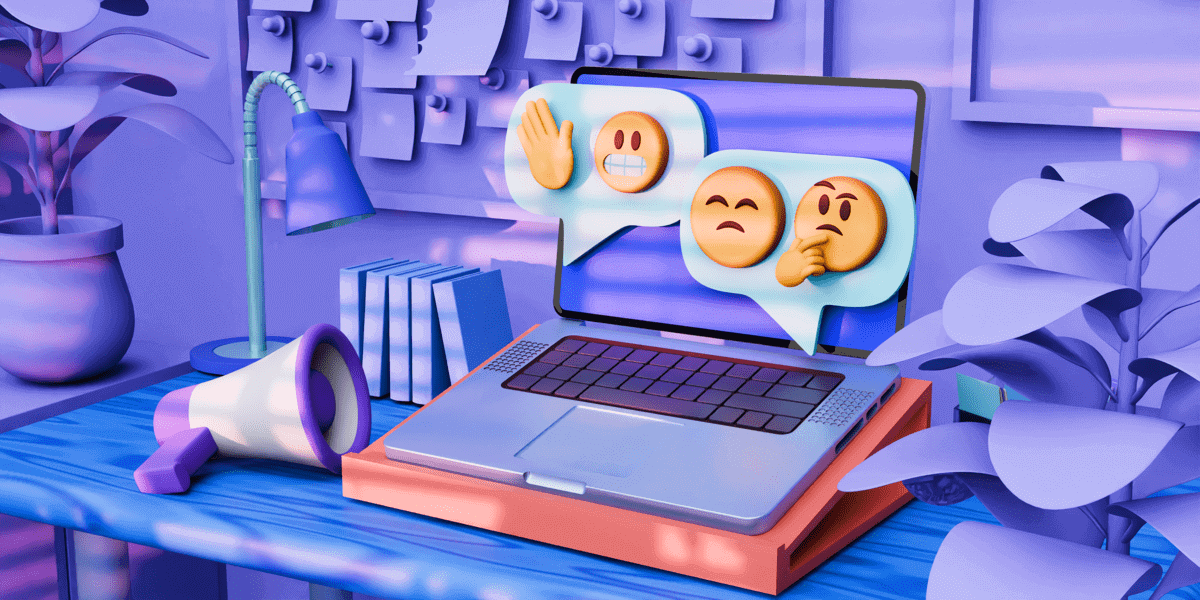
Table of Contents
How emojis spread to different cultures
Emojis are one of many cultural phenomena that originated in Japan. In 1997, the very first set of 90 black and white emojis was released on a Japanese pager-like device known as J-phone.
Two years later, in 1999, Shigetaka Kurita created a set of 176 emojis for a mobile phone, prompting other phone companies to do the same in response — and causing emojis to become a worldwide phenomenon in the process.
Once emojis left Japan and spread to different parts of the world, they gained a life of their own, as languages do.
While there are still many similarities between emoji interpretations across different cultures, the fact that Keith Broni was chosen as the world’s first emoji translator in 2017, says volumes about how differently cultures around the world perceive emojis in communication.
Why do emojis mean different things in different countries?
It’s well-known that languages change as time passes and as they come in contact with different cultures.
Although it’s hard to imagine this happening to images, there are some fundamental differences in people’s backgrounds, education, tradition, and bringing up that create communicational barriers when it comes to the use of emojis.
Differences in emoji usage across the east and west
Among the emojis that might be misinterpreted in different cultures, emoji faces that represent emotions are the last to come to mind (after all, a smile is a smile in every country, right?).
Well, research suggests otherwise.
In 2020, a paper published in the Cyberpsychology, Behavior, and Social Networking journal confirmed what many before suspected — there is a difference between how different cultures interpret cues in the eyes versus cues in the mouth while analyzing emotions.
Hence, a smiley doesn’t have the same meaning to everyone.
The researchers chose 427 people from western Europe and North America (Westerners) and East Asia (Easterners) and presented them with nine emojis with different variants of happy eyes/happy mouth, happy eyes/sad mouth, sad eyes/happy mouth, sad, eyes/neutral mouth, etc.
While there was no difference in how the Easterners and Westerners perceived emojis with the eyes and mouth pointing toward the same emotion, the results regarding emojis with mixed signals varied greatly.
The research found that Easterners placed more value on the emotions showed in the eyes, while Westerners determined emotions based on the look of the mouth.
The reasons listed for these differences were that people from countries with collectivist cultures are more adept at reading subtle facial cues found in the eyes. Conversely, people from individualistic cultures, where self-expression is encouraged, tend to look at the mouth for more obvious cues.
Perhaps a more obvious reason why some emojis can be misinterpreted are cultural differences. This includes hand gestures, religious differences, and popular culture, among other things.
So far, there has been little to no attempt to perform similar research on emoji faces that represent emotions other than happiness or sadness. However, the abovementioned research alone is enough to suggest that none of our favorite emoji faces are safe from cross-cultural misunderstandings.
Internet availability
Despite existing studies that suggest that humans perceive smiley face emojis similar to actual smiling faces, more recent research suggests that things are a bit more complicated.
In a 2017 study published in the Journal of Cross-Cultural Psychology, a group of Japanese researchers aimed to determine the influence of exposure on the understanding of emojis.
The study focused on a group of respondents from Japan, as representatives of a country with high exposure to emojis, and respondents from Tanzania and Cameroon, as those with very low exposure. The respondents were presented with pictures of emoticons and emojis with happy, neutral, and sad faces, along with corresponding pictures of real faces, and were asked to identify the emotion shown in each image.
The results showed that everyone was able to determine the emotions on real faces equally well. However, when it came to identifying emotions in emoticons and emojis, the respondents from Tanzania and Cameroon weren’t as successful as those from Japan. In fact, most had a hard time determining what was presented in the pictures at all.
It’s important to mention that, according to the study, Japan is a country with an unusually high Internet exposure, with 94.3 internet users per 100 people (94.3%), while in Cameroon and Tanzania, the numbers are as low as 20.7 and 5.4 users per 100 people respectively (20.7% and 5.4%). This led researchers to conclude that Internet availability is a major factor in how people from different countries perceive emojis in communication.
The emojis commonly misunderstood in different cultures
Here’s a list of 8 popular emojis that you might not have expected could cause major misunderstandings depending on whom you’re talking to.
The waving hand emoji
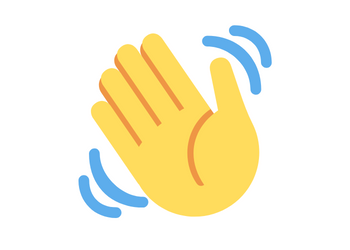
A waving hand (👋) is probably the most innocent hand gesture westerners can think of. As such, it’s difficult to imagine it meaning anything else but “hello” or “goodbye”. However, it’s best to avoid it in China, South Korea, and Pakistan.
While similar to the western meaning of “goodbye”, the hand wave in China has a significantly stronger meaning and is often used to break up relationships and friendships, especially in chat apps.
In South Korea, while it isn’t used to break up friendships, it might well lead to that. Namely, waving your hand at someone with your palm facing outward is a way to beckon dogs and other animals in this country, and will be considered very rude if aimed at a person.
Even more insulting would be using this gesture in Pakistan, where it’s perceived as a string of imaginative curses hurled at someone, and might leave you with a black eye.
While the western influences are slowly seeping into these countries, and younger people can be seen waving hands at each other without any ill intentions, it might still be best to steer clear of this gesture with people from China, South Korea, and Pakistan for the time being.
Just imagine the consequences of sending this emoji to a potential business partner from China after a meeting. Not only would they think you wanted to cut all ties with them, but they would also likely find you unprofessional because you used an emoji at work in the first place.

The folded hands emoji
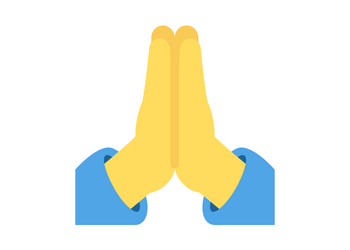
This can be a tricky one. The interpretation of the so-called folded hands emoji (🙏) drastically differs between the east and west. According to Emojipedia, the gesture means “Thank you” or “Please” in Japan.
Expectedly, in India, people use it to mean “Namaste”, while people from western countries often perceive it as prayer. A rarer, but still possible interpretation of this emoji is a “high five”.
While none of these interpretations are offensive, they are different enough to cause confusion in cross-cultural conversations — and even between people from the same country who interpret this emoji differently.
It’s a common occurrence on Twitter to see this emoji accompanying a memorial post dedicated to a deceased celebrity, or while wishing someone a quick recovery. And it’s even more common to see confused people reacting and wondering why anyone would be high-fiving a person’s death or illness.
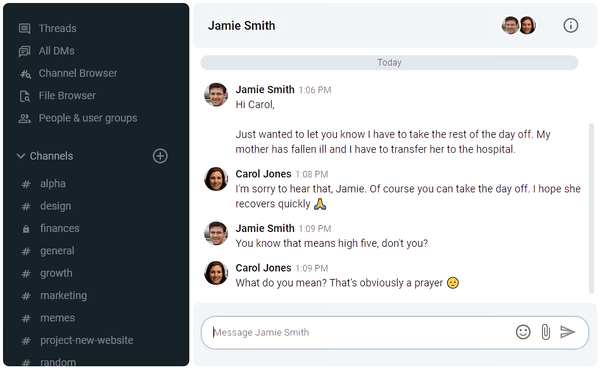
However, another way this emoji can be interpreted is as “clapping”, and this can pose a problem when talking to people from China.
Due to the nature of the gesture, as well as the accompanying sound, clapping has distinctly sexual connotations in China, so it’s best you avoid it when talking to someone from that region.
The OK hand emoji
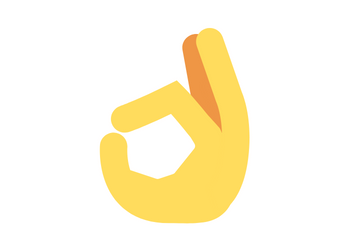
Another seemingly innocent gesture in the US, until recently, is the OK hand (👌).
Whether in team chat apps or in real life, you should give this emoji a wide berth in Brazil. According to the New York Times, it has “scatological” connotations and is considered equivalent to flicking someone the middle finger, as Insider writes.
Other countries that find this gesture equally offensive are Greece and Spain. In Turkey, it’s an insult toward the LGBTQ+ population.
And, as of late, even the US has found an offensive use for it. This gesture has recently been linked to white supremacist groups and put on the proverbial blacklist of gestures.
Given the sheer number of people you could enrage, and the potential trouble you could get in — like it was the case with a White House employee, Zina Bash, who was accused of a vicious conspiracy” after accidentally resting her hand in a position similar to the OK hand during a publicized event — you’d be best off avoiding it altogether.
The sign of the horns emoji
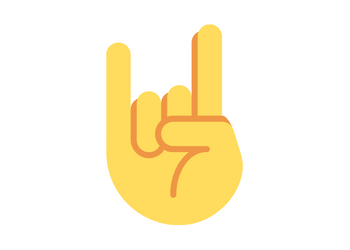
In most countries, this sign is linked to metal and rock n’ roll music, and used to mean “rock on”, or “hardcore”.
However, the sign of the horns (🤘) (also sometimes confused with the gesture Spiderman makes to release his web) is a highly offensive gesture in some European and most countries of Latin America — including Spain, Italy, Greece, Colombia, Portugal, Brazil, and others.
In these, and many other European countries, the word that describes a man who is being unknowingly cheated on by his wife is “horned”. With the popularity of rock and metal music, many people from the aforementioned countries are aware of the sign’s positive meaning and might even take it as a compliment.
However, if you come across someone who’s not a fan of these musical genres, you risk the chance of deeply offending them, so use it at your own discretion.
The thumbs up emoji
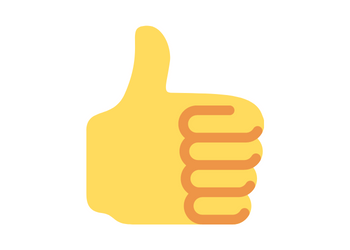
Through the spread of social media and the “like” reaction that seems to be everywhere, most people around the world have adopted, or at least, become somewhat aware of the positive meaning the thumbs up gesture (👍) has in the west.
In Greece, the Middle East, and some parts of Africa, however, it’s a whole different story.
In Iraq, for example, giving someone a thumbs up is probably worse than giving someone the middle finger in the west. In fact, it might be more similar to the forearm jerk.
This meaning is mostly contained to the Middle East, and you should be safe using it with people from western countries — but, just to be safe, it might be better to do your research first.
Imagine your Greek manager asking you whether you’ve finally finished your project and you give them the 👍.

The victory hand emoji
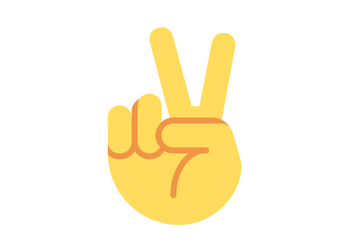
The victory sign (✌️), also known as the peace sign, is another one that could get you in trouble if you’re not careful.
The origins of the sign aren’t confirmed, but popular folklore suggests that its original meaning, packed with insult and ridicule, first appeared in the 20th century in the battle of Agincourt.
Legend says that the British archers were so formidable that the ones captured by the French had their index and middle fingers cut off so that they couldn’t pull the bowstrings anymore. This caused their brethren to use these two fingers to taunt the French.
This V hand gesture with the palm facing inward is still considered an obscene gesture in Britain and many countries of the Commonwealth. Most of the world, however, isn’t aware of this, so it’s not uncommon to see tourists taking pictures outside the Buckingham palace, making what they believe is a peace sign, but instead hurling insults at everyone and anyone around them.
As mentioned before, this gesture has two other meanings — victory and peace, along with the more obvious meaning of number two — but all of them are expressed with the palm facing outward.
The baby angel emoji
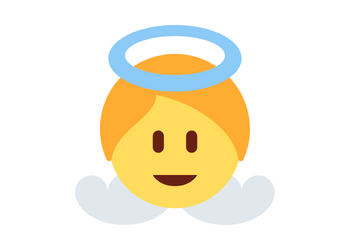
The baby angel emoji (👼), also known as just angel, putto, cherub, and sometimes even cupid, this adorable emoji should be avoided in China at all costs.
Contrary to its popular meaning of cuteness, love, and innocence, in China, an angel is a symbol of death. So, unless you actually want to send death threats to your co-worker from China, avoiding this cute harbinger of doom might be for the best.
The love hotel emoji
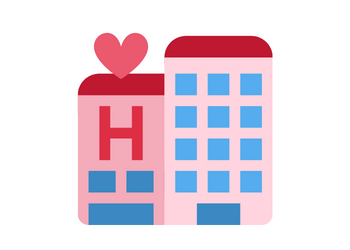
It’s understandable why anyone outside of Japan might use this emoji to indicate a hospital or wish someone to get well soon. It’s a building with a heart on it, some variations of the emojis even have big letter H on the building. Everything points to the building being a hospital.
However, the name of the emoji proves otherwise. It’s actually a love hotel (🏩).
Anyone familiar with Japanese culture will realize how this can be interpreted as a highly sexual emoji. This is because, in Japan, love hotels are hotels where one can anonymously rent a room by the hour and enjoy private time with a lover.
While you should be safe to use this emoji to mean “hospital” when talking to people from any other country, be careful, as a Japanese person will definitely misinterpret it.
So if you want to wish someone from Japan a fast recovery, this might not be the best way. Although it might land you a date if the misunderstanding is not cleared.
Why are emoji cultural differences important for workplace communication?
Considering the substantial differences in how different cultures perceive emojis, using them in a multi-cultural workplace can be tricky. This is especially true for remote teams who don’t have many chances to communicate in person and get to know each other.
Take this situation, for example.
A new team of four people is formed at a remote-first company. Two members are from the US one from Turkey, and one from Greece.
None of them have met each other before.
Their first meeting is via a video call.
For a while, everything goes smoothly — until they start talking business.
One of the members from the US makes a suggestion regarding an upcoming project, and when the other member from the US wants to answer, she realizes her microphone is suddenly not working. So, she just makes an OK gesture with her hand 👌 in response.
And just like that, she has managed to offend three people in three different ways, without even knowing it.
How to overcome cultural differences in emoji use?
The differences in emoji usage across cultures are many, and there is nothing we can do about that. There are, however, a few things we can do to make sure these cultural differences don’t negatively affect our communication in the future.
Accept that emojis are not a universal language
Despite Vyvyan Evans, the author of The Emoji Code, calling emojis a “new universal language”, the evidence above shows that they are far from that.
Cultural differences aside, many emojis are also interpreted differently by people from the same country, and even from the same group of friends. Cliques adopt their own uses and meanings for emojis and use them for internal communication or as an inside joke.
Many of these misunderstandings are even created due to the differences in the devices or apps we use.
Business messaging apps such as Pumble, do their best to avoid these misunderstandings by sticking to the official Unicode versions of emojis.
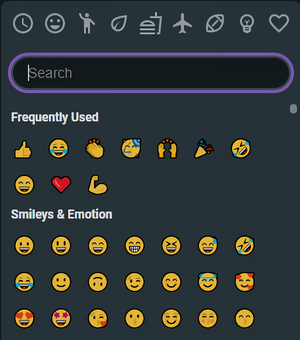
Many others, however, create their own emoji sets, with companies like Twitter, Microsoft, Apple, Facebook, and so on, each having their own iterations of emojis. These sometimes look different enough to understand how their meanings could be easily mixed up even among the same group of people.
Their failure as a universal language is also obvious in the several marketing campaigns that failed miserably because people were unable to interpret their meanings. So, instead of appearing hip and cool, companies like Juicy Fruit and Tampico, which attempted to write out their slogans entirely in emoji, left everyone with a big question mark above their heads.
And yet, emojis continue to dominate our conversations because they are invaluable to our digital communication.
The increasing use of digital communication platforms in both our personal and professional lives created a demand for a way to translate emotional cues to the digital world, and emojis were the answer. Imperfect as they are, their impact and usefulness are undeniable.
Learn the most commonly misinterpreted emojis
Given how irreplaceable emojis have become in our digital communication, we can’t, and we shouldn’t try to avoid them. Instead, the best solution is to simply familiarize ourselves with the few pictographs that can be misinterpreted in cross-cultural communication.
In this article, we already told you about eight of the most commonly problematic emojis. There might be others that slipped under our radar, but simply keeping in mind the abovementioned eight might save you a lot of trouble if you find yourself in a sensitive situation — such as working in a cross-cultural team, for example.
Another fool-proof method is to simply ask. As the famous Chinese proverb says, “He who asks is a fool for five minutes, but he who does not ask remains a fool forever”.
Be mindful of how you use emojis at work
Unintentionally using an offensive emoji in private communication might earn you a few scornful lines of text until the misunderstanding is cleared. Accidentally sending an offensive emoji at the workplace might land you in hot water up to your ears depending on who the recipient is.
This doesn’t mean emojis should be avoided at work at all costs, but you should avoid using them as freehandedly as you might in private correspondence.
A multi-cultural workplace is a common sight these days, especially with the rise of remote work, since companies have the opportunity to hire people from all over the world. To make sure you don’t get yourself in any trouble, it’s best to stick to emojis that are safe to use at work — or else, observe how your colleagues and superiors use them, and mirror their behavior.
Make full use of emojis with Pumble
Strange as it may sound, emojis are a sort of language. And like any language, they change and adapt as they come into contact with different cultures.
Today, emojis have become different enough that some misunderstandings based on cultural differences are possible — especially in workplace communication — and the only way to avoid them is to familiarize yourself with these emojis.
Luckily, Pumble has you covered there.
With a vast selection of both standard and custom emojis, Pumble allows you to fully utilize this new language of pictographs and enrich your communication with emojis and reactions. The custom emoji feature that Pumble offers to all users also allows you to tailor all emojis to your specific workplace or your and your coworker’s needs — thus diminishing the chances of misunderstandings.
With Pumble, you can use emojis in:
- DMs,
- Channels,
- Thread, and
- Video calls.
With Pumble, the world of emojis is your oyster — so use it!




